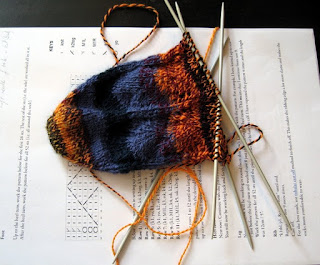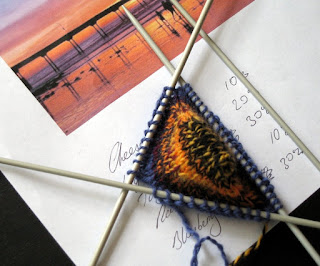I like doing things by hand the long way - I love knitting by hand (especially outside on a gorgeous day like today) and using a drop spindle. All the same, I had become quite excited by the prospect of using this to deal with all the fleece I have:

In no time (well, a couple of hours) it had turned this pillowcase of jacob cross fleece :

into this:

Did I enjoy it? YEAH! Turn a handle and raw fleece becomes sliver. Well, there's a bit more to it than that. You're supposed to tease out your locks and separate the tips. I like to use a pet comb rather than a flick carder, and found it difficult not to do too much. I had to keep reminding myself that the drum carder was going to do the hard work for me.
You have to take the fibre off the drum, split it lengthways and put each half through again, and then repeat if necessary.
I did find that the more preparation you do, the better the finished result is, and that a bit more work with the comb saves one pass through the drum carder.
Finally you take the fibre off the drum, roll it lengthways and stretch it out to make sliver. Is it cheating to make it this much easier? I don't know, but I guess no more so than using a spinning wheel.

















